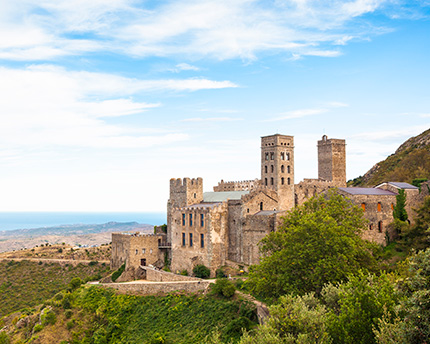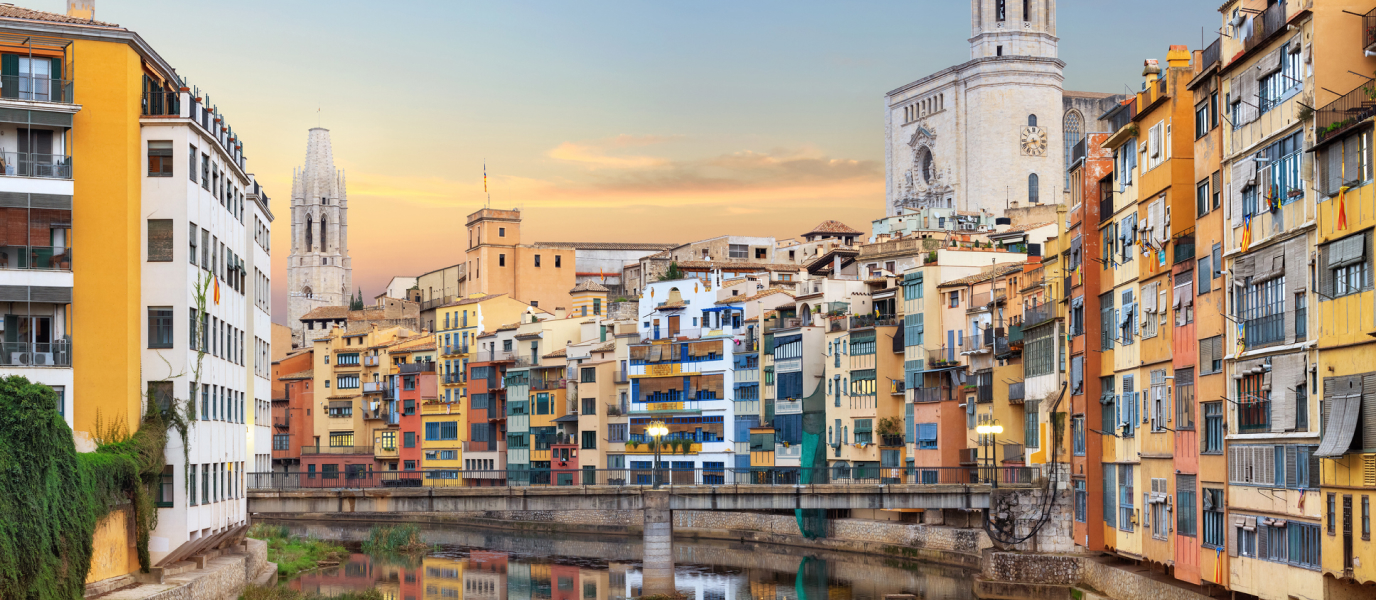Housed within the old Episcopal Palace on the Pujada de la Catedral street which leads up to the cathedral, the Girona Art Museum is a must-visit institution for those looking to discover the history and artistic treasures of this Catalan province. Visitors to the museum, which was founded in 1976, can immerse themselves in each stage of Girona’s artistic history in chronological order. In doing so, they can learn about each of the styles that have flourished in the prevailing artistic expressions throughout the city’s history, including Romanesque, Gothic, Renaissance, Baroque, Realism, Modernism and Noucentisme.
The Girona Art Museum, which also manages the heritage spaces of the former Santa Catalina Hospital, has spaces dedicated to ceramics, glasswork and Catholic liturgy, as well as rooms for temporary exhibitions.
Its Medieval collections, which include the altar of the Sant Pere de Rodes Monastery, are of particular artistic significance. It also has the third-largest collection of Romanesque and Gothic art in Catalonia.
The museum’s cultural and historical importance
The Girona Art Museum came into existence following an agreement signed between Girona’s Provincial Council and its Bishopric in 1976. Under this agreement, the Provincial Council contributed part of the collection that was previously held in the Provincial Museum of Antiquities and Fine Arts and agreed to pay for its management and operating costs, while the Bishopric of Girona donated the collection of the Diocesan Museum and allowed the museum to be housed in the Episcopal Palace.
Following the agreement, the refurbishment and remodelling work continued until the year 1991. From that point on, the most important artistic creations produced in Girona between the Romanesque period and the 20th century have been on display in the museum. Since 1992, the museum has been managed by the Regional Government of Catalonia.
Most important works and collections
The Girona Art Museum initially displayed collections from the Provincial Museum of Antiquities and Fine Arts, which derived from the Romanesque Sant Pere de Galligans Monastery. It also displayed several archaeological pieces from around the province, although these remained under the management of the Archaeology Museum of Catalonia.
The former Diocesan Museum also donated many pieces of work to the Girona Art Museum, including collections put together by canon Ramon Font and Father Pere Valls, works collected by the Bishopric and those received through private donations.
The Girona Art Museum building, which has a thousand-year history behind it, is a jewel in its own right. When it was first constructed, it was the first building in the city’s history to be built in a Gothic style. Nowadays, it is home to multiple artistic masterpieces including the portable altar of the Sant Pere de Rodes Monastery, which is made out of stone and wood coated in silver. Its Medieval collection also includes a polychrome Romanesque beam from the Sant Miquel de Cruilles Monastery and the Mother of God of Besalú, which is one of the finest Gothic sculptures of its kind.
The art collection also includes 20th-century works, with pieces by the likes of Joaquim Vayreda, Santiago Rusiñol and Ramón Martí Alsina.
Temporary exhibitions and events
The Girona Art Museum runs an extensive schedule of temporary exhibitions and art-related activities. The museum has held multiple temporary exhibitions over the years, including illustrations from the newspaper “Avui” and paintings depicting the landscapes of the Costa Brava, stretching from Blanes to Cap de Creus, passing through Cadaqués. Temporary exhibitions have also been dedicated to the painters Celso Lagar and Hortense Begué (“The Catalan Years”), to Modest Urgell (“Beyond the Horizon”) and to fake works that are found on the art market (“The Art of Deception”).
Recommendations for your visit
General admission tickets to the Girona Art Museum cost 6 euros. Concession tickets are available for senior citizens over the age of 65, students and large families, while children under the age of 16 can enter for free. Admission is also free on the first Sunday of every month. The museum is open from 10 a.m. to 7 p.m. from May to September. From October to April, it is open from 10 a.m. to 6 p.m. It is only open from 10 a.m. to 2 p.m. on Sundays and public holidays and is closed on Mondays.





































































